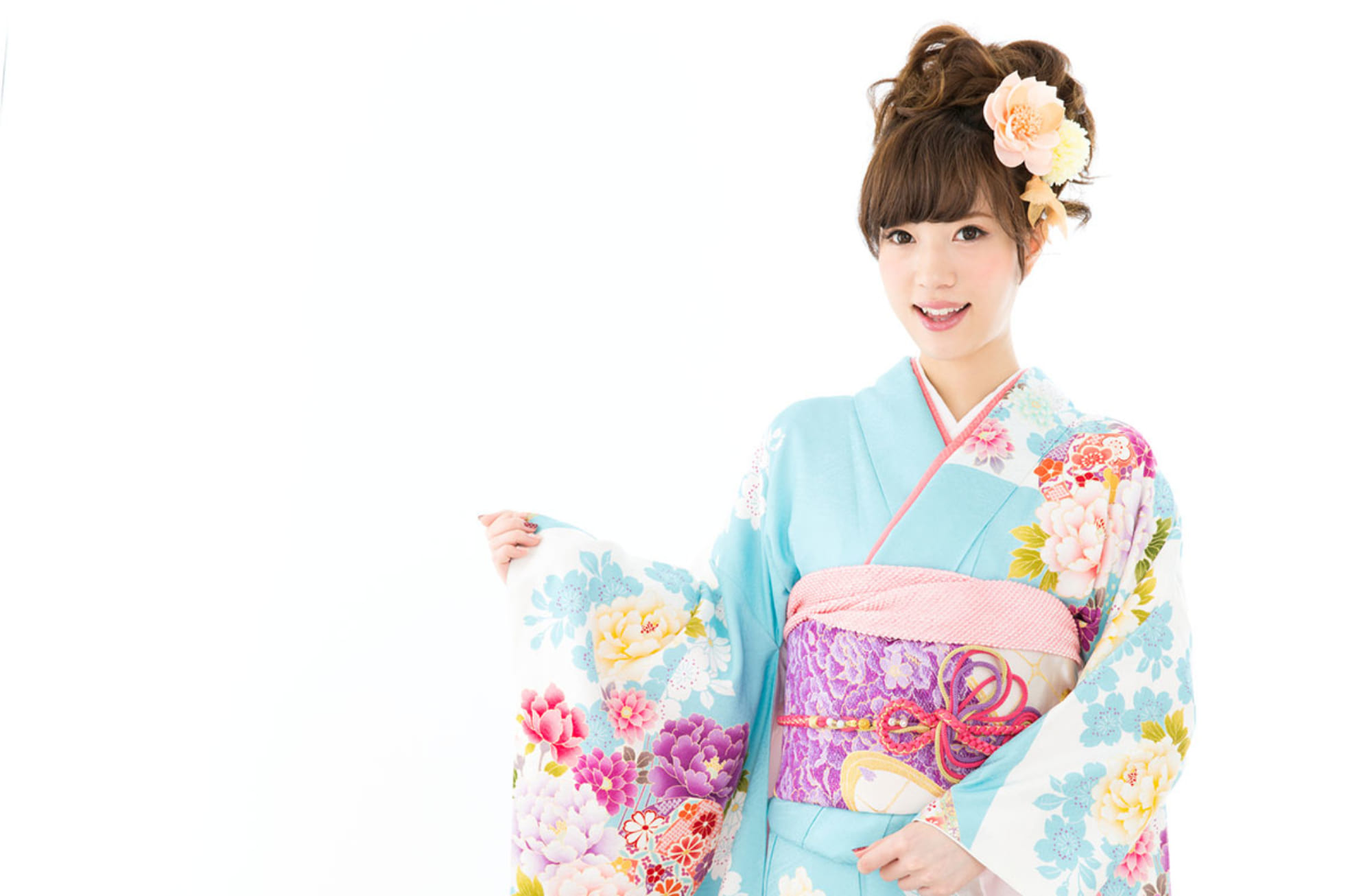Tsumugi
A fabric woven from silk threads. The silk floss is spun using fingertips, and the resulting threads are dyed and woven into a simple yet distinctive fabric. Tsumugi kimonos are usually seen as casual wear, but they can also be worn as fashionable street wear. A ebamoyou (single patterned) houmongi made from tsumugi can be used in informal occasions such as parties.
There are many places in the country known for tsumugi production, and the handmade products are known as high quality fabric. The fabric is simple and the color and patterns are plain, but they can be worn simply.
Oshima tsumugi is produced in Amami Island in Kagoshima. The threads are dyed using a plant dye called Techiki as well as muddy water, and woven into a plain weave. Yuki tsumugi is known for its detailed tortoise-shell dye pattern. Other tsumugi fabrics include the Nagai tsumugi from Yamagata with its traditional large kasuri pattern and the Yonezawa tsumugi known for its detailed kasuri pattern.
In Hachijojima in the Izu Islands, there are woven fabric dyed using kariyasu (a plant dye) into Kihachijo (yellow pongee) not only in yellow, but also reddish-brown, black and white. Other well-known tsumugi fabrics are Shinshu tsumugi, Kuji tsumugi from Gifu, Ushikubi tsumugi from Ishikawa, Tokamachi tsumugi from Niigata, Echigo tsumugi, Muikamachi tsumugi, Ayanote tsumugi from Miyazaki, and Kumejima tsumugi and Shuri tsumugi from Okinawa.
[quote style=”boxed”]In Japanese
紬
絹の紬糸で織った織物です。真綿から指先で紡ぎ、絹糸を色で染めてかた反物に織る素朴な風合が特徴です。紬は普段着の代表ですが、おしゃれな街着としても楽しめます。紬素材の訪問着は、柄付けを絵羽模様にしたものもあり、正式な場以外のカジュアルなパーティーなどで着ていけます。
全国各地に紬の有名な産地があり、手仕事の込んだ作品は高級品とされます。素朴で色も柄も地味ですが、着込むほどにやわらかくなります。
大島紬は、鹿児島県の奄美大島の特産で車輪梅の枝に泥染め、経緯絣の平織りです。結城紬といえば細かな亀甲の並んだ経緯の絣が代表的です。他にも山形県の長井紬は古典的な大きな柄、米沢紬は細かい絣で知られます。
伊豆諸島の八丈島では刈安を染料にした黄八丈をはじめ、黄、鳶色、黒、白が特徴の織物があります。信州紬、岐阜県の郡上紬、石川県の牛首紬、新潟県の十日市紬、越後紬、六日町紬、南の方では宮崎県綾の手紬、沖縄県久米島紬、首里紬なども有名です。
[/quote]
